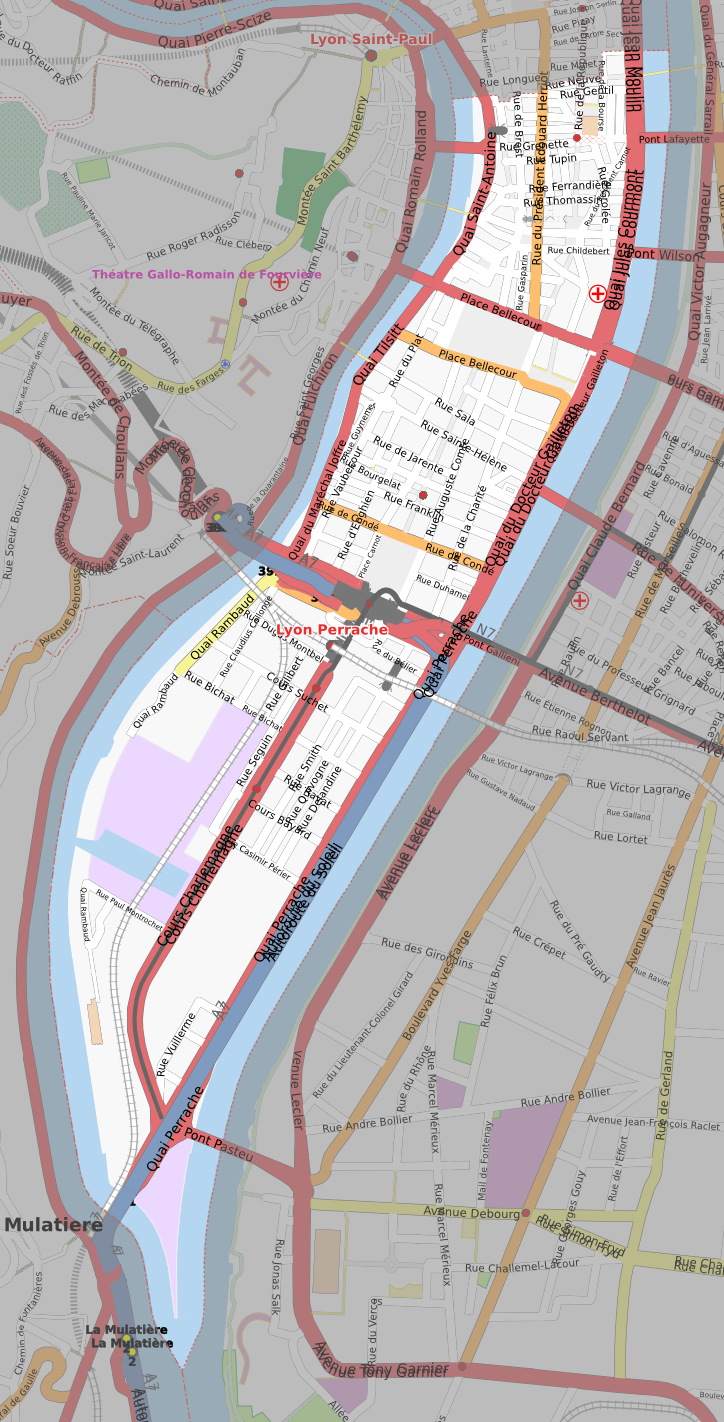|
Passage De L'Argue
The Passage de l'Argue is a covered arcade in the Bellecour quarter, in the 2nd arrondissement of Lyon, which connects the rue de la République to the rue Édouard-Herriot and the rue de Brest. It is continued across rue de Brest by the , which was part of the main passage until the road was constructed. The Passage de l'Argue is one of the oldest arcades in the French provinces, built at the same period and on the same model as Parisian arcades. Home to many luxury retailers, it plays a significant role in the trade of the Presqu'île. History The word ''argue'' (from Greek ''arguros'', which means "silver" in English) refers to the wire drawing machine for gold and silver bullions used for weaving. One of two assay bureaux instituted to prevent silver counterfeiting was located in the rue de la Monnaie, near the Passage de l'Argue; the other was in Paris. The Passage de l'Argue is already recorded on the city map made in 1740 by Claude Séraucourt, but was then an alley ... [...More Info...] [...Related Items...] OR: [Wikipedia] [Google] [Baidu] |
2nd Arrondissement Of Lyon
The 2nd arrondissement of Lyon is one of the nine arrondissements of the City of Lyon. History The first five arrondissements of Lyon were created by the Decree of March 24, 1852, which included the 2nd arrondissement. The current mayor is Denis Broliquier. Geography Area and demographics The 2nd arrondissement is the most commercial and most lively ones of Lyon. * Area: * 1990 : 27,971 inhabitantsLyon 2ème arrondissemenGrandlyon.com (Retrieved May 23, 2009) * 2006 : 30,276 inhabitants * Relative density : Districts The districts (quarters) of the 2nd arrondissement are : * Les Cordeliers * Bellecour * Les Célestins * La Confluence * Ainay * Perrache * Sainte-Blandine Streets and squares * Cours Charlemagne * Cours de Verdun * Cours Suchet * Passage de l'Argue * Palais de la Bourse * Place Ampère * Place Bellecour * Place Antonin-Poncet * Place Carnot * Place de la République * Place des Célestins * Place des Jacobins * Quai Jules Courmont * Quai Rambaud * ... [...More Info...] [...Related Items...] OR: [Wikipedia] [Google] [Baidu] |
Corinthian Order
The Corinthian order ( Greek: Κορινθιακός ρυθμός, Latin: ''Ordo Corinthius'') is the last developed of the three principal classical orders of Ancient Greek architecture and Roman architecture. The other two are the Doric order which was the earliest, followed by the Ionic order. In Ancient Greek architecture, the Corinthian order follows the Ionic in almost all respects other than the capitals of the columns. When classical architecture was revived during the Renaissance, two more orders were added to the canon: the Tuscan order and the Composite order. The Corinthian, with its offshoot the Composite, is the most ornate of the orders. This architectural style is characterized by slender fluted columns and elaborate capitals decorated with acanthus leaves and scrolls. There are many variations. The name ''Corinthian'' is derived from the ancient Greek city of Corinth, although the style had its own model in Roman practice, following precedents set by the ... [...More Info...] [...Related Items...] OR: [Wikipedia] [Google] [Baidu] |

.jpg)